- Home
- Frederick Douglass
Narrative of the Life of Frederick Douglass: An American Slave Page 3
Narrative of the Life of Frederick Douglass: An American Slave Read online
Page 3
In the context of trickster behavior in Douglass’s Narrative, though, we must not forget the other Brer Rabbit: the one who eats the food of all the other animals, the one who cares nothing for the community but lives only for private pleasure, the monster who will deceive, punish, and kill even his own family to gain and maintain personal power. The trickster is he, and sometimes she, whose tokens almost always take the same forms: sex (not love, but pure physical pleasure through domination), food, and money. As Robert Bone has argued so well,f the Brer Rabbit tales that circulated orally among the slaves had two purposes: to teach the small but clever bunny’s survival skills, required if the weak were to stay alive under the dominion of the powerful; and also, crucially, to serve as cautionary tales exposing the slave-holder (and those like him) as a kind of Brer Rabbit run wild and somehow elected to the presidency. It is this latter trickster as great white monster against which Douglass first learns to brace himself.
In the Narrative’s first chapter, Douglass lets his readers know that he lives in this dangerous trickster’s den by describing the extraordinarily cruel beating of his beautiful Aunt Hester. As a baby and toddler living with his grandmother on the outskirts of the plantation, Douglass had been protected from the workaday life of the slave. But now, moved to the plantation itself, he witnesses the first evidence of his true situation as he sees Hester under the lash. Jealous that she has been spending time with another man, a slave named Ned Roberts, Mr. Anthony, the master, strips Aunt Hester from neck to waist, fastens her hands with a rope hooked to the ceiling, and slashes her naked back with heavy rawhide. “And soon the warm, red blood (amid heart-rending shrieks from her, and horrid oaths from him) came dripping to the floor,” writes Douglass, who was “so terrified and horror-stricken at the sight, that I hid myself in a closet, and dared not venture out till long after the bloody transaction was over. I expected it would be my turn next” (p. 21).
This terrible scene initiates the boy Douglass into the treacherous and chaotic world of the trickster in power. If in this nineteenth-century world of southern chivalry, a young black woman had no protection from raw, lawless brutality, how could Douglass not assume that there were no laws or limits at all, that indeed his turn would come next?—particularly when the perpetrator of the arbitrary violence seemed “to take,” in Douglass’s words, “great pleasure” in the act of whipping. All of her human responses, voluntary and involuntary, made the situation worse: “The louder she screamed, the harder he whipped; and where the blood ran fastest, there he whipped longest. He would whip her to make her scream, and whip her to make her hush; and not until overcome by fatigue, would he cease to swing the blood-clotted cowskin” (p. 20). This terrifying scene, says Douglass, “was the blood-stained gate, the entrance to the hell of slavery, through which I was about to pass” (p. 20).
In his Narrative Douglass delivers a modicum of justice to the sadistic Anthony by the sheer act of describing his brutality and then exposing the baseness of his motives. As we shall see, Douglass the slave has learned to beware Brer Rabbit in master’s clothing as well as to become enough of a trickster himself to survive the trickster’s lair. And listen for the trickster-like aggressive laughter of Douglass the writer, who describes, with a blue-hot rage barely concealed under the language’s deadpan surfaces, the man who beat his mother’s sister: “I have had two masters. My first master’s name was Anthony. I do not remember his first name. He was generally called Captain Anthony—a title which, I presume, he acquired by sailing a craft on the Chesapeake Bay” (p. 19). In other words, this miserable man was no more a legitimate captain or leader of any kind than any other pretentious little man, any other human ant-ony, or whatever his name was.
Later Douglass would level his verbal guns on Captain Auld, presumably another bogusly titled figure, describing him as so emphatically mean that “the leading trait in his character was meanness; and if there were any other element in his nature, it was made subject to this. He was mean; and, like most other mean men, he lacked the ability to conceal his meanness.” To top off his depiction of Auld as ridiculous—“incapable of managing his slaves either by force, fear, or fraud”—Douglass says, “he might have passed for a lion, but for his ears” (p. 55). The man pretended a lion’s power, but still he looked foolish: He had “his ears.” Were they Brer Rabbit’s ears?
This verbal aggressiveness is also seen in Douglass’s description of Mr. Severe: “rightly named.... His presence [where slaves were at work] made it both the field of blood and of blasphemy. From the rising till the going down of the sun, he was cursing, raving, cutting, and slashing among the slaves of the field, in the most frightful manner” (p. 24). And of Mr. Gore, whom we presume also to have been “rightly named,” at home as he was in the realm of cruelty to slaves: “He was just the man for such a place, and it was just the place for such a man.... Though a young man, he indulged in no jokes, said no funny words, seldom smiled. His words were in perfect keeping with his looks, and his looks were in perfect keeping with his words.... He spoke but to command, and commanded but to be obeyed; he dealt sparingly with his words, and bountifully with his whip, never using the former where the latter would answer as well” (pp. 32-33).
Without question the clearest evidence that Douglass saw the slave-holders as grim tricksters-in-command comes in his descriptions of the slave-breaker Edward Covey. Douglass reports that among themselves the slaves called Covey “the snake.” Was Covey thus given the name of another trickster from the realm of animal tales? In careful language, Douglass describes how “the snake”
had the faculty of making us feel that he was ever present with us. This he did by surprising us. He seldom approached the spot where we were at work openly, if he could do it secretly. He always aimed at taking us by surprise.... When we were at work in the cornfield, he would sometimes crawl on his hands and knees to avoid detection, and all at once he would rise nearly in our midst, and scream out, “Ha, ha! Come, come! Dash on, dash on!” This being his mode of attack, it was never safe to stop a single minute. His comings were like a thief in the night. He appeared to us as being ever at hand. He was under every tree, behind every stump, in every bush, and at every window, on the plantation. He would sometimes mount his horse, as if bound to St. Michael‘s, a distance of seven miles, and in half an hour afterwards you would see him coiled up in the corner of the wood-fence, watching every motion of the slaves (p. 61).
On another day Covey would pretend to give frank instructions in connection with a long trip he was taking; but then, “before he would get half way thither, he would turn short and crawl into a fence-corner, or behind some tree, and there watch us till the going down of the sun.”
Lest anyone miss the point, Douglass tells his reader that “Covey’s forte consisted in his power to deceive. His life was devoted to planning and perpetrating the grossest deceptions. Every thing he possessed in the shape of learning or religion, he made conform to his disposition to deceive. He seemed to think himself equal to deceiving the Almighty” (p. 61). This white trickster, lying in wait for potential black tricksters, recalls the ruse of Douglass’s former owner Colonel Lloyd, whose plan to keep slaves out of his beautiful, fruit-filled garden was a variation on the rabbit’s strategy in the tale of Brer Rabbit and the tar-baby. Lloyd put tar on the fence around the garden, “after which, if a slave was caught with any tar upon his person, it was deemed sufficient proof that he had either been into the garden, or had tried to get in. In either case, he was severely whipped by the chief gardener” (p. 28). The other side of this, of course, is that doubtless the slaves were working just as hard to avoid the tar, while getting the fruit, as Lloyd was to keep them out of his garden in the first place. Trickster versus trickster.
As with the names of Captain Anthony, Mr. Severe, and Mr. Gore,g so with Covey’s name, which, as with the others, Douglass underscores for mockery by repeating it over and over again. According to Noah Webster’s 1828 dictionary, the dictionary tha
t would have been on Douglass’s desk, “covey” is derived from the French noun couvee, meaning “brood” or “hatch of offspring,” and the verb cubare, meaning “to lurk or lie hid”; the dictionary defines “covey” as: “1. a brood or hatch of birds; an old fowl with her brood of young,” and “2. a company; a set.” The modern Oxford English Dictionary specifies that a covey is “a family of partridges keeping together during the first season.” As we consider Douglass’s ongoing strategy of gaining elbow-room on these tricksters by deflating them with sharp, aggressive language, note his constant naming of Mr. Covey, whose pluralized moniker suggests, under the pressure of Douglass’s insistent mockery, both the slave-driver’s egotistical pretenses of omnipresence and Covey’s secret identity not only as a snake but as “an old fowl” and lurking mother bird—this in a book all about the exigencies of true manhood.
This “Covey‘s” teenage charge, Douglass, ultimately refuses to recognize the slave-driver’s legitimate authority; he turns the tables on Covey not only with artful language but also with physical force. In the highly charged terms of this encounter, Douglass’s victory over Covey indicates more than one man’s defeat of another. It is the boy David’s defeat of mighty Goliath. The language also suggests the smashing by Frederick (soon to be renamed Douglass, after a story-book hero) of what might be called a whole covey of Coveys, of the system of American slavery itself, with its absurd pretensions of protecting and nurturing a black child-race in need of white “covey ing.” In Douglass’s subtle but take-no-prisoners formulation, this absurd, brooding mother-partridge is nothing but a snake!
It was under Covey’s brutal management that Douglass took seven-league boot-sized strides toward freedom. Again in mythic terms, Douglass describes how at first Covey’s snaky brutality and interminable regimen of hard labor defeated his spirit. “A few months of this discipline tamed me,” Douglass says. “Mr. Covey succeeded in breaking me. I was broken in body, soul, and spirit. My natural elasticity was crushed, my intellect languished, the disposition to read departed, the cheerful spark that lingered about my eye died; the dark night of slavery closed in upon me; and behold a man transformed into a brute!” He was “sometimes prompted” to kill Covey and himself, “but was prevented by a combination of hope and fear” (p. 63).
Douglass describes his reversal of fortune in terms that are at once mystical and deeply responsive to his hard-fought struggles in trick sterdom. In a now-famous passage, he apostrophizes the sparkling Chesapeake Bay, “whose broad bosom was ever white with sails from every quarter of the habitable globe” (p. 63), choosing terms that suggest a refusal of Covey’s thorny hatch in favor of protection under the majestic wings of the beautiful ships on the bay: “You are freedom’s swift-winged angels, that fly round the world,” he calls to the winds. “I am confined in bands of iron! O that I were free! O, that I were on one of your gallant decks, and under your protecting wing!” With these angels of freedom before his eyes, he resolves to risk his life to get away. “I have only one life to lose. I had as well be killed running as die standing.... Try it? Yes! God helping me, I will.” He rounds off this paragraph of mystical revelation and conviction quite appropriately, with a quote from the spirituals: “There is a better day coming.”
Douglass resolves never again to be beaten by Covey, or anyone else, without a fight. In anticipation of his showdown with Covey, while watching the ships on Chesapeake Bay he says, “You have seen how a man was made a slave; you shall see how a slave was made a man.” By framing the sentence in this way, Douglass uses the diagonal turn of phrase that we saw in his previous descriptions of Auld and Gore (for example, “just the man for such a place, just the place for such a man”): a strategy of Latin and Greek speeches called chiasmus, a verbal crisscrossing in which the order of words in the first clause of a sentence is inverted in the second. ( John F. Kennedy used chiasmus when he said, “Ask not what your country can do for you, ask what you can do for your country.”)
I linger on chiasmus because this figure of speech, this verbal reversal, is important to the structure and meaning of Douglass’s whole book, and to the meaning of Douglass’s reversal of fortunes, his turning of the tables on his trickster-adversaries. Indeed, as we shall see, we may describe this as a double-double-cross, as one kind of trickster reverses the fortunes of another. For Douglass’s mission was not merely to write a nicely balanced set of sentences but to undermine and reverse a system of power relations: to show the master as slave (to liquor, to power, to sadism), the professed Christian as hypocrite, the weak as strong, the slave as free—from one point of view, ironically freer than the master. As Henry Louis Gates, Jr., has observed, this pattern of reverse language begins in the first pages of the narrative, h where Douglass repeatedly describes the very dark skin of his mother, whom he seemed to see, as he repeats, only at night, emphasizing the darkness drawn in opposition to the stark daylight world of white control. Eventually—in a broad pattern of chiasmus—the dark people enjoying only flashes of family togetherness and control in the night will take control of their daylight hours, too, as their fortunes turn like a chiasmus-reversed sentence: a sea-change at 180-degrees, toward freedom.i
Back at work after his revelation at Chesapeake Bay, Douglass falls sick, and as punishment Covey beats him severely. Failing to find protection from his (il)legal owner Master Thomas, who had rented Douglass to Covey, Douglass returns to Covey; but when Covey runs out to beat him again, Douglass runs away again to hide in the woods. “My behavior,” says Douglass, “was altogether unaccountable.” What follows is a highly significant scene in which Douglass, on the run but without resources to attempt a run for freedom, falls in with fellow-slave Sandy Jenkins, and seeks his advice concerning what to do next. “I found Sandy an old adviser,” writes Douglass. Sandy Jenkins’s advice is surprising in the context of Christianity but not in the context of Douglass’s ongoing battle against the forces of tricksterism.
He told me, with great solemnity, I must go back to Covey; but that before I went, I must go with him into another part of the woods, where there was a certain root, which, if I would take some of it with me, carrying it always on my right side, would render it impossible for Mr. Covey, or any other white man, to whip me. He said he had carried it for years; and since he had done so, he had never received a blow, and never expected to while he carried it. I at first rejected the idea, that the simple carrying of a root in my pocket would have any such effect as he had said, and was not disposed to take it; but Sandy impressed the necessity with much earnestness, telling me it could do no harm if it did no good. To please him, I at length took the root, and, according to his direction, carried it upon my right side (pp. 67-68).
The best gloss for this scene has been provided by the writer Toni Morrison, who argues that Sandy embodies an ancestral tradition of root workers and doctors traceable back through African-American religio-medicinal practices of the South and the Caribbean to the continent of Africa. Further, Sandy (whose name seems to reinforce his identity as a man of the spirit and of the earth—perhaps of the seashore) offers a “safe space” and encouragements that serve to reconnect Douglass with a sense of a black community that cares about him, and which has ways of its own that are beyond the watch and guard of slavery and slave-holders, with their officially sanctioned practices and epistemologies.j Sandy’s identity as an “old adviser” married to a free woman suggests possibilities of freedom and family for Douglass, too. Slavery has been a cauldron of family separation; but here are a wise man and family unit to prove, as Douglass had announced at Chesapeake Bay, a better day coming. Here, too, is hope that the powers of the black world—the dark mother, the night, the root from the ground now secretly held in the pocket—will invade and reverse the bleak, blaring bright world overseen by the likes of Covey, a snake in the sun watching and waiting to attack.
The power of Sandy’s root is tested that Sunday morning when Douglass takes his friend’s advice and heads straight back to
Covey’s place. He immediately sees Covey, who speaks kindly, gives Douglass a minor task, and continues on his way to church. Perhaps the root was working! That Monday morning, the root’s efficacy is fully tested. Covey comes at Douglass with a long rope, and sets about tying him up for a thrashing. As soon as Douglass realizes Covey’s plan, the young man springs away but is again secured. “But at this moment—from whence came the spirit I don’t know—I resolved to fight; ... I seized Covey hard by the throat; and as I did so, I rose. He held on to me, and I to him” (p. 68). They fought for nearly two hours, remembers Douglass. “I considered him as getting entirely the worst end of the bargain; for he had drawn no blood from me, but I had from him.... This battle with Covey,” says Douglass, “was the turning-point in my career as a slave” [emphasis mine]. As a result of the fight, “my long-crushed spirit rose, cowardice departed, bold defiance took its place; and I now resolved that, however long I might remain a slave in form, the day had passed forever when I could be a slave in fact. I did not hesitate to let it be known of me, that the white man who expected to succeed in whipping, must also succeed in killing me.” Covey never touches him again, and in the four remaining years of his bondage, “I had several fights, but was never whipped” (p. 69).
The fight with Covey indicates that to survive slavery Douglass needs the strategies of both trickster and strongman—“the hare and the bear,” as Ralph Ellison once put it. Still the presence of the good-luck root (rabbit‘s-foot-like charm that it is) makes clear that stealth and other qualities represented by the root are more important than sheer physical force in reversing Douglass’s fortunes. Chiasmus—the art of turning things around—was working as a hard-bought strategy in Douglass’s life before he had learned to master it as a figure of speech.

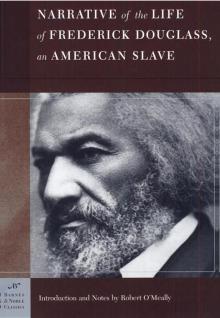 Narrative of the Life of Frederick Douglass: An American Slave
Narrative of the Life of Frederick Douglass: An American Slave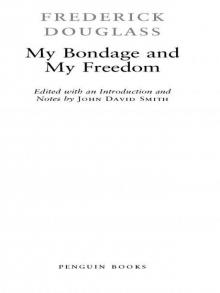 My Bondage and My Freedom
My Bondage and My Freedom Two Slave Rebellions at Sea
Two Slave Rebellions at Sea The Color Line in America
The Color Line in America The Negro Exodus from the Gulf States
The Negro Exodus from the Gulf States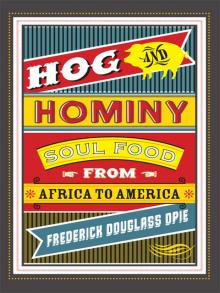 Hog and Hominy: Soul Food From Africa to America
Hog and Hominy: Soul Food From Africa to America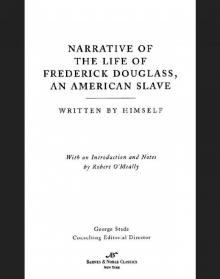 Narrative of the Life of Frederick Douglass
Narrative of the Life of Frederick Douglass![An Appeal to Congress for Impartial Suffrage [a machine-readable transcription] Read online](http://i1.bookreadfree.com/i/03/23/an_appeal_to_congress_for_impartial_suffrage_a_machine-readable_transcription_preview.jpg) An Appeal to Congress for Impartial Suffrage [a machine-readable transcription]
An Appeal to Congress for Impartial Suffrage [a machine-readable transcription] The Color Line
The Color Line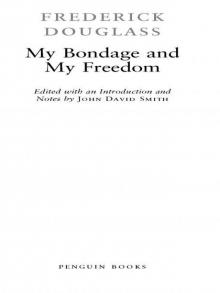 My Bondage and My Freedom (Penguin Classics)
My Bondage and My Freedom (Penguin Classics)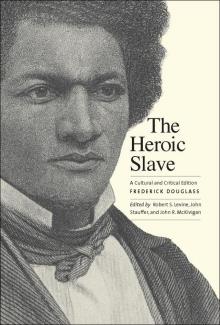 The Heroic Slave
The Heroic Slave